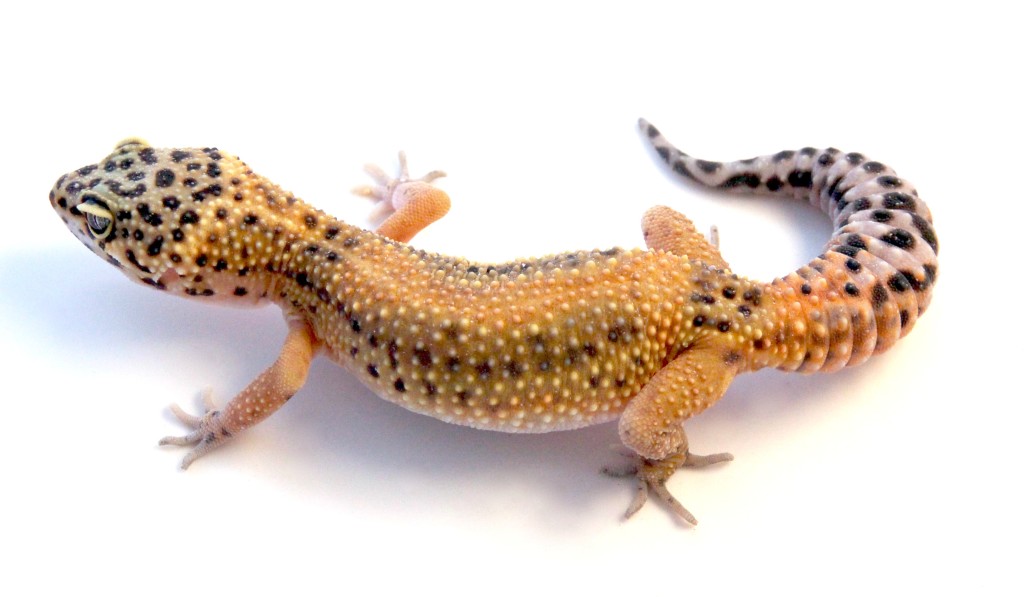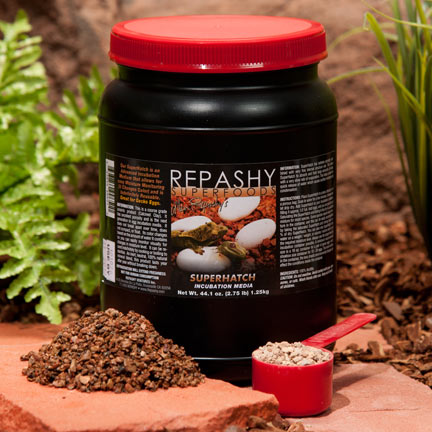Ever wondered how to breed Leopard geckos? Leopard Geckos (Eublepharis macularius) are quite possibly the most common pet lizard. You can find them for sale at big pet stores as well as get them from specialty breeders and reptile shows. They are very well-loved and respected amongst reptile enthusiasts.
But did you know that in addition to having very basic care requirements that are quite simple to meet, leopard geckos are also really easy to breed?
Read on to find out how we take care of our leopard gecko breeding groups. We’ll cover everything from mating to caring for your hatchlings, and everything in-between.

Step-by-step: How to Breed Leopard Geckos
Leopard Gecko Mating
It’s common sense that in order to get leopard gecko babies, you’ll have to get your leopard geckos to mate. The good news is that this is almost easier done than said!
Because leopard geckos of similar size can usually be housed communally, you can keep several females in the same enclosure with one male. Never, ever, keep two adult males in the same enclosure unless you want a bloody battle royale to ensue.
One easy way to tell if you have a male leopard gecko is by looking beneath the lizard’s tail. It should have a pronounced hemipenile bulge, whereas females won’t. Also, males and females both have a broad V-shape of pores at the base of their tail. Males have much deeper pores, and often times you can see a waxy substance in and around the pores of males (but never females).
Make sure that your geckos are of breeding age. Most will be ready to reproduce when they are nine to ten months old or weigh approximately 50 grams.
You most likely won’t witness the actual mating behavior because it only takes two to three minutes, and they are nocturnal lizards. However, most females are receptive to males unless they are malnourished or unhealthy. Excited males will vibrate the very tip of their tail prior to mating, and it can actually be fairly loud!
Females can lay several clutches of eggs from a single mating. However, in order to maintain peak fertility and laying, keep the male with the female at least once per week.
We have a rack system and continually move breeder males from bin to bin during breeding season. This have provided great results and our females lay eggs very regularly.
Hopefully we’ve sufficiently answered how to breed Leopard geckos, but if you have any additional questions, please feel free to e-mail us.
How Leopard Geckos Lay Eggs
The average clutch size for a leopard gecko is two eggs. However, don’t be alarmed if your female only lays a single egg as this does happen from time to time, albeit infrequently.

Over the course of a year, a successful mating pair can produce anywhere from eight to ten eggs. If you are repeatedly allowing your female to breed, we recommend proper vitamin dusting with calcium supplements as producing and laying eggs is a very strenuous process for a female.
We follow Ron Tremper’s advice and offer Vionate (vitamin) and Osteo-Form (calcium) to our Leopard gecko breeding colonies. Ron Tremper is, in our opinion, the most venerable Leopard gecko breeder in the world, and the industry owes him a great debt of gratitude.

If you observe your geckos closely, you will notice that the substrate in which the eggs are buried will appear slanted. For example, at Backwater Reptiles, we have special shoe boxes with lids filled with substrate to give the females a good medium to comfortably lay their eggs (another Ron Tremper recommendation).
When we open the lids, if we see that the substrate is piled up on one side and angled downwards on the other side of the box, this indicates that the female has been digging and signals us to unearth the eggs and transfer them to the incubator.

Incubating Leopard Gecko Eggs
Once you have gently unearthed your leopard gecko eggs, you can transfer them to an incubator.

Fertile eggs are firm, taut, and have a small amount of weight to them. If the eggs feel squishy and soft, odds are they will not hatch. However, we always incubate all the eggs just in case, even if we do think they aren’t fertile.
At Backwater Reptiles, we use an incubating substrate called Repashy Superhatch as our incubation media. We fill small plastic cups with lids with the medium, soak the clay granules for a minute, pour standing water out, and place 2-6 eggs into each vented deli cup with the lid on.

Fun fact: If you know what morph your parent leopard geckos are, you can keep track of the mixes of babies you produce. It can be interesting to see what patterns and colors result from different breeding pairs.
Once you’ve placed your eggs securely in the incubation substrate (they should be embedded about halfway into the media), you can label your cup if you desire. At Backwater Reptiles, we include the date we uncovered the clutch as well as what morphs the parents were and the bin where the eggs were found.

Keep your incubator temperature set anywhere from 77 to 90+ degrees. The gender of the babies will be determined by what temperature you select, so if you want females, keep the temperature in the lower range. If you want males, keep it warmer.
What to Do When Your Leopard Gecko Eggs Hatch
After about two months, you can expect your eggs to start hatching.

The babies know how to exit the eggs. They won’t need any help. Odds are that if you start checking the eggs on a daily basis around the time that two months have elapsed, you’ll be pleasantly surprised to open your incubator lid and – voila! – hatchling leopard geckos!
Here’s a story that proves just how easy it can be to incubate Leopard gecko eggs. Once when we were cleaning, feeding, and checking the bins we came across perfect little babies in one of the Super Snow shoeboxes! They were eggs that we didn’t notice, but that incubated successfully inside the main enclosure.
Conclusion – How to breed Leopard geckos
It honestly doesn’t take a lot to breed leopard geckos. This is a species that takes to captivity very well and will therefore reproduce naturally if you have a male and female together.
If you think you’d like to start a leopard gecko family of your own, Backwater Reptiles has leopard gecko morphs of all types and can get you a male and female to begin your journey, including many different morphs, and even giant and super giants!
Don’t miss our other articles on:
Do leopard geckos regenerate their tail?
